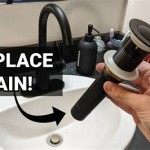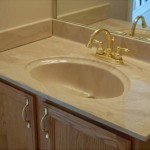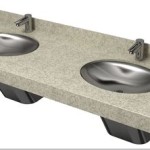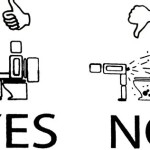Best Way to Remove a Bathroom Vanity
Removing a bathroom vanity is a common home improvement project undertaken for various reasons, ranging from replacing an outdated unit to remodeling the entire bathroom space. While the task can appear daunting, executing it methodically and with the proper tools can ensure a smooth and efficient process. The best approach minimizes the risk of damage to surrounding fixtures, plumbing, and the vanity itself, should it be intended for reuse.
The first step involves careful planning and preparation. This includes gathering the necessary tools, which typically include a utility knife, adjustable wrench, basin wrench, pliers, screwdriver (both Phillips head and flathead), a bucket, safety glasses, gloves, and potentially a pry bar and shims. Having these tools readily available will streamline the removal process and prevent unnecessary delays. Furthermore, it is crucial to turn off the water supply to the vanity before commencing any work on the plumbing. Locate the shut-off valves under the sink. If these valves are not present or functioning, the main water supply to the house needs to be turned off. Testing the water flow after turning off the valves is essential to ensure the water is completely shut off.
Protecting the surrounding areas is another critical aspect of preparation. Laying down drop cloths or old towels around the vanity will protect the flooring from scratches, water spills, and debris. This precautionary measure will save time and effort in cleaning up later. Moreover, carefully inspect the vanity and the surrounding walls for any potential hazards, such as loose tiles or damaged drywall. Addressing these issues before starting the removal process will prevent further damage and ensure a safer working environment.
Disconnecting the Plumbing
One of the most crucial steps in removing a bathroom vanity is disconnecting the plumbing. This involves disconnecting the water supply lines and the drainpipe. Begin by placing a bucket under the P-trap, the curved section of the drainpipe, to catch any residual water. Using an adjustable wrench or pliers, carefully loosen the slip nuts that connect the P-trap to the drain tailpiece (the vertical pipe extending from the sink) and the drainpipe in the wall. Once the nuts are sufficiently loosened, gently detach the P-trap and empty any remaining water into the bucket.
Next, disconnect the water supply lines. Using an adjustable wrench, carefully loosen the compression fittings that connect the supply lines to the shut-off valves. Be prepared for a small amount of water to spill out, even after the shut-off valves are closed. Have a towel readily available to absorb any spills. Once the supply lines are disconnected, inspect them for any signs of corrosion or damage. If the supply lines are old or damaged, it is advisable to replace them with new ones when installing the new vanity. This proactive measure will prevent potential leaks and ensure the longevity of the plumbing system.
If the vanity includes a pop-up drain stopper mechanism, disconnect it from the drain tailpiece. This typically involves loosening a screw or clip that secures the linkage connecting the stopper to the lever. Carefully detach the linkage and remove the stopper from the drain. Once all the plumbing connections are disconnected, thoroughly clean the drain area and the surrounding pipes. This will remove any debris or buildup that could potentially cause clogs or leaks in the future.
Detaching the Vanity from the Wall and Floor
After disconnecting the plumbing, the next step is to detach the vanity from the wall and floor. Most vanities are secured to the wall with screws or nails driven through the back of the vanity cabinet into the wall studs. Begin by inspecting the vanity for any visible screws or nails. Use a screwdriver or a drill with a screw/nail removing attachment to remove these fasteners.
If the vanity is also attached to the floor, it may be secured with screws or adhesive. Carefully inspect the base of the vanity for any visible screws. If screws are present, remove them using a screwdriver. If the vanity is attached with adhesive, use a utility knife to carefully score along the edges of the vanity where it meets the floor. This will help to break the adhesive bond and make it easier to detach the vanity. In some cases, a pry bar may be needed to gently pry the vanity away from the floor. However, exercise caution when using a pry bar to avoid damaging the floor or the vanity itself if it is intended for reuse.
Before completely removing the vanity, double-check for any remaining connections or fasteners. Once all connections are detached, carefully lift or slide the vanity away from the wall. If the vanity is heavy, enlist the help of another person to prevent injury. As the vanity is being removed, be mindful of any pipes or wires that may be running behind it. Take care not to damage these utilities during the removal process.
Removing Obstacles and Preparing for the New Vanity
Once the old vanity is removed, the final step involves removing any remaining obstacles and preparing the space for the new vanity. This includes removing any remaining caulk or adhesive residue from the wall and floor. A putty knife or a scraper can be used to remove the residue. For stubborn adhesive residue, a solvent-based cleaner may be necessary, but always follow the manufacturer's instructions and wear appropriate safety gear.
Inspect the wall and floor for any damage, such as holes, cracks, or water stains. Repair any damage before installing the new vanity. This may involve patching holes with drywall compound, filling cracks with caulk, or sealing water stains with a stain-blocking primer. Ensuring a smooth and even surface will facilitate the installation of the new vanity and prevent future problems.
Finally, clean the area thoroughly to remove any dust, debris, or residue. Vacuuming and wiping down the walls and floor will create a clean slate for the new vanity. With the area prepared, the installation of the new vanity can commence, following the manufacturer's instructions and ensuring all plumbing connections are properly and securely connected. This meticulous preparation will lead to a successful vanity installation and a revitalized bathroom space.

How To Remove A Bathroom Vanity Budget Dumpster

How To Remove A Bathroom Vanity Remodel

How To Remove Bathroom Vanity Cabinet Step By Guide
:max_bytes(150000):strip_icc()/8_remove-sink-base-cabinet-56a4a26d3df78cf772835b30.jpg?strip=all)
How To Remove A Bathroom Vanity Cabinet

Replace Vanity Top And Faucet Diy Network
:max_bytes(150000):strip_icc()/7_remove-vanity-top-56a4a26d3df78cf772835b2d.jpg?strip=all)
How To Remove A Bathroom Vanity Cabinet

How To Remove Replace A Vanity Top Easy Bathroom Sink Remodel


How To Remove A Countertop From Vanity Decor Adventures

How To Install A Bathroom Vanity And Sink
Related Posts







